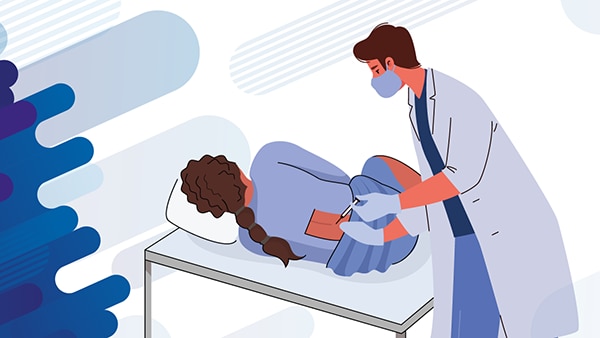Healthcare-Associated Fungal Meningitis:
Information for Healthcare Providers
Outbreak linked to procedures with epidural anesthesia in Matamoros Mexico, 2023
Anyone who had a procedure under epidural anesthesia at River Side Surgical Center or Clinica K-3 in Matamoros, Mexico, from January 1 to May 13, 2023 is at risk for fungal meningitis and should go to the emergency room (ER) right away for testing even if you do not have any symptoms. Immediate testing and treatment can save your life.
Learn more about the current outbreak.
Information for Healthcare Providers
While rare, medical and surgical procedures can lead to fungal meningitis if medical devices or medications are contaminated with fungi or if proper infection control practices are not observed. Healthcare-associated fungal meningitis outbreaks have occurred among patients who received corticosteroid injections or epidural anesthesia. Appropriate manufacturing and infection control procedures can help prevent these healthcare-associated infections.
Consider the following diagnostic and treatment recommendations for patients with suspected fungal meningitis.
Signs and Symptoms of Fungal Meningitis
Fungal meningitis is a life-threatening condition. Some patients may initially have mild or nonspecific symptoms before rapid onset of severe illness. Signs and symptoms might include:
People can also get fungal meningitis from outdoor environmental exposure to disease-causing fungi.
- Headache
- Fever
- Photophobia (light sensitivity)
- Meningismus (stiff neck)
- Nausea and/or vomiting
- Altered mental status
Symptoms can appear weeks to months after exposure.
Diagnostic Considerations
Diagnostic testing for fungal meningitis is challenging and susceptible to false-negative results. Fungal culture results may be negative and take up to 2 weeks to turn positive. Additionally, infections may involve multiple fungal pathogens or a combination of bacterial and fungal pathogens.
Recommended diagnostic procedures for patients with suspected fungal meningitis include:

- Brain imaging using MRI or CT scans
- Diagnostic lumbar puncture (LP) unless contraindicated (e.g., because of skin infection over the puncture site, brain mass causing increased intracranial pressure) to collect cerebrospinal fluid (CSF)
- Blood collection
CSF and blood testing should include:
- Fungal and bacterial cultures
- Serum and CSF (1,3)-Beta-D-Glucan testing
- Optional tests include serum Aspergillus galactomannan and CSF fungal polymerase chain reaction (PCR) testing.
Regardless of symptom severity, consider testing any patient with signs and symptoms of meningitis who recently had epidural anesthesia or injections, especially if linked to products or supplies associated with other fungal meningitis cases. Some patients with fungal meningitis initially have mild or nonspecific symptoms.
Treatment Recommendations
Consult with an infectious disease specialist when determining treatment approaches.
After obtaining CSF, immediately begin treatment in patients with suspected fungal meningitis. Treatment should not be withheld because of negative fungal culture or (1,3)-Beta-D-Glucan results.
Treatment should involve broad spectrum antifungals that have adequate central nervous system penetration. Dual therapy can be considered and has been used in previous fungal meningitis outbreaks.
Notifications and Consultation
Notify your state or local health department about any suspected or confirmed cases of healthcare-acquired fungal meningitis and contact your jurisdiction’s healthcare-associated infection program coordinator.
Public health officials who are concerned about potential cases of fungal meningitis associated with this outbreak should email the Mycotic Diseases Branch (MDB) at fungaloutbreaks@cdc.gov for assistance with recommendations and testing.
- Fungal Meningitis Outbreak Associated with Procedures Performed under Epidural Anesthesia in Matamoros, Mexico
- Heath Alert Network (HAN) Update Important Updates on Outbreak of Fungal Meningitis in U.S. Patients Who Underwent Surgical Procedures under Epidural Anesthesia in Matamoros, Mexico
- HAN- -Outbreak of Suspected Fungal Meningitis in U.S. Patients who Underwent Surgical Procedures under Epidural Anesthia in Matamoros, Mexico
- U.S. Multistate Outbreak—2012-2013